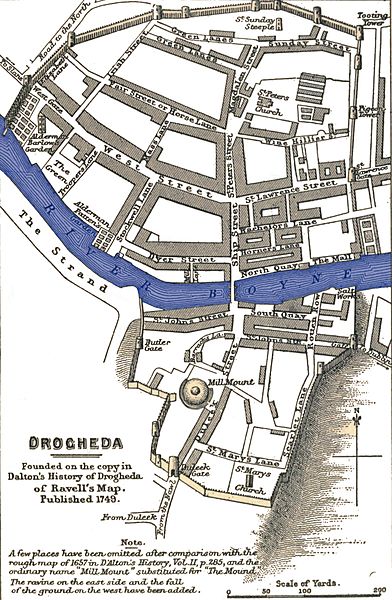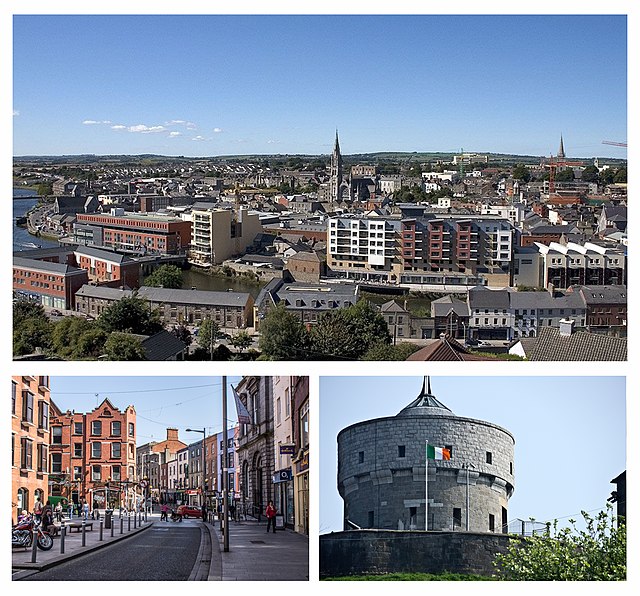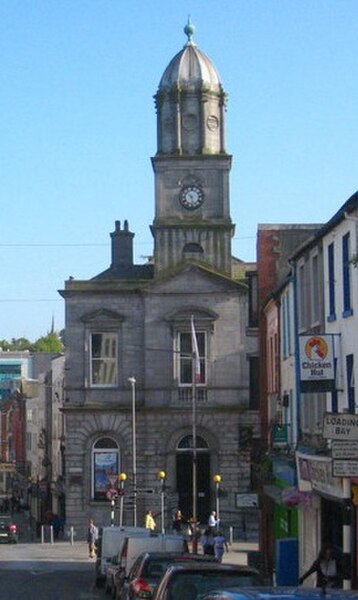The siege of Drogheda took place from 3 to 11 September 1649, at the outset of the Cromwellian conquest of Ireland. The coastal town of Drogheda was held by a mixed garrison of Irish Catholics and Royalists under the command of Sir Arthur Aston, when it was besieged by English Commonwealth forces under Oliver Cromwell. After Aston rejected an invitation to surrender, the town was stormed and much of the garrison executed, along with an unknown but "significant number" of civilians. The aftermath of the siege is viewed as an atrocity which still impacts Cromwell's modern reputation.
A plan of Drogheda in 1649
St Laurence's Gate – the last remaining of the ten original defensive gates
A cannon firing in a re-enactment at the modern Millmount Fort
A 19th-century representation of the massacre at Drogheda, 1649
Drogheda is an industrial and port town in County Louth on the east coast of Ireland, 42 km (26 mi) north of Dublin city centre. It is located on the Dublin–Belfast corridor on the east coast of Ireland, mostly in County Louth but with the south fringes of the town in County Meath, 40 km (25 mi) north of Dublin city centre. Drogheda had a population of 44,135 inhabitants in 2022, making it the eleventh largest settlement by population in all of Ireland, and the largest town in the Republic of Ireland, by both population and area. It is the last bridging point on the River Boyne before it enters the Irish Sea. The UNESCO World Heritage Site of Newgrange is located 8 km (5.0 mi) west of the town.
Clockwise from top: Drogheda viewed from the south; Millmount Fort; West Street, Drogheda
The Tholsel
Commemoration of Official Charter
St Mary Magdalene Friary.








